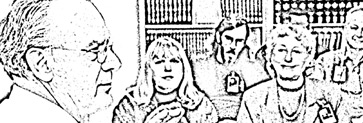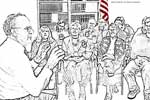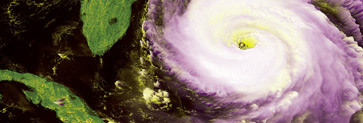
By Teresa Bailey
A few years ago, I attended a national conference on knowledge management. Larry Prusak gave the keynote address. He distilled what was important about knowledge management in a single word: storytelling. He went on to say that our most important knowledge isn’t in a database and it’s not in a computer application; it’s in our stories.
As a librarian, I’m aware that public libraries have traditionally been places that provide an opportunity for storytelling, poetry readings and other forms of community expression. It hadn’t occurred to me that my library at NASA Jet Propulsion Laboratory (JPL) could serve that same purpose.
One day, I was talking about all of this with Willis Chapman, my division manager, and he finally said, “So, why don’t you do storytelling in the library?”
I responded, “Well, okay,” but I had no idea how storytelling would work in the library, or what it would look like. Not much had been written on the institutional benefits of stories when I started thinking about my storytelling project in 1999. There was no guide to follow, no handbook on how to get things started.
I thought about the idea for a few months, trying to imagine what it would be like to host JPL Stories. Up to that point, I had heard bits and pieces of stories during lectures and talks at the lab.

Larry Dumas, then Deputy Director at JPL, talks about traditions worth preserving at the inaugural session of JPL stories on February 24, 2000.
I knew about the pioneering work done at JPL from formal reports and discussions at conferences. What did I hope to capture that wasn’t already being expressed? It was personal experience, I realized. Beyond the well-documented specs of a project, I hoped to create a platform for sharing first-hand experience of what it is like to work on a NASA mission.
I decided to set up a few basic criteria. We needed storytellers, that much was certain. But what time would we have our program? And how often? How long would it run? Step-by-step, I figured out that we would have the programs in the late afternoon near closing, when the library was slow. And, even though we’re blessed with an abundance of old-timers who have accomplished incredible things here, if we wanted to build community we needed to make our program something that everyone in the community could feel a part of. When I scheduled stories, I would try to mix career types, ages, and levels of tenure.
I put out a call for storytellers in our center newspaper, The Universe. No one- not a single person- responded.
I realized that I had been too ambiguous. No one knew what to make of my ad. Storytelling, what does she mean? When people thought about storytelling they thought about reading a children’s book in front of an audience; it was hard to make the conceptual leap from that to telling a personal story about a JPL experience. So, I started talking. My plan was to talk to some people in management about the program to try to get more direction on my recruiting effort. Willis Chapman’s support was instrumental here in generating interest and gaining buy-in for the program by upper management.
I had one of my first meetings with Larry Dumas, then JPL’s Deputy Director. I put together a list of possible discussion points because I had been advised to be well prepared before talking to someone in upper management. I had also been told to expect only about five minutes of time, but it didn’t turn out that way.
Our meeting was casual. We went over my list, and discussed ways that I could promote the program and recruit storytellers. Then he told me, “I would like to be your first storyteller.” It turned out that he had been kicking an idea around in his head for some time. A lot of his job as Deputy Director dealt with organizational change because we were in the middle of the shift from large missions to faster, better, cheaper, smaller missions. He was responsible for bringing about major changes that disturbed a lot of people, and he found himself thinking about the things that shouldn’t be changed-such as core values and work ethics. He knew already what he would call his story: “Things to Keep.”
We set up a date. In the beginning, I had a modest budget (today the program has no budget). I used the money to work with a designer to create a “look” for the program. I sent out flyers and posted them, and put announcements in our Center papers. I got a lot of feedback: People wrote to tell me that the library was too small, that the time of day wasn’t good for people who have to commute, that we should be recording the talks. I even got one crank call asking if we would be serving milk and cookies.
But all that didn’t discourage me. I realized that my goal was to reach the community and the community was responding to the program. I might have shaken them up a little, but I had reached them.
And people came. I was amazed to see more than 70 people show up for our very first program. That wasn’t the only surprise. We assumed that the audience would enjoy the stories if we could convince them to come. But we didn’t anticipate just how warmly they would respond. People came up to me and thanked me. They told me that the story had given them a feeling of connectedness and belonging.
JPL Stories is entering its fourth year. The series is enthusiastically supported by the library staff and a core team keeps the program on track, including Mickey Honchell, who transforms our space each month, Tony Reynolds who provides multimedia support and Barbara Amago, who helps with programming and stands ready to step in and direct the program if needed.
In the last three years, 60 to 80 people have come each month to listen. We’ve heard about missions deemed successes and missions deemed failures. Dr. Bobby Williams told us about landing the NEAR spacecraft on an asteroid, and Tom Gavin about “What Could Go Wrong” on a project. We’ve listened to a parable (“Green Eggs and Ham – JPL Style”) that expressed what it’s like to be a space discoverer-the struggles and the disappointments, but also the reason to keep going in the face of setbacks. Dr. Edward Stone has told us about his “Journey of a Lifetime” with the Voyager Spacecraft, and Dr. William Pickering about JPL’s early years. All our programs were stories told from a personal point-of-view, and all were stories that have shared knowledge and experience not typically captured in a formal report.
When I began working on JPL stories, I had to do a lot of selling as I made cold calls to find storytellers. I used to have to go into a long explanation of the program and its benefits to the Center. I don’t have to do that anymore. On feedback forms circulated at the end of each program, we receive recommendations for future storytellers. When I call someone now to talk about the program, they’ve invariably heard about the program and are interested in participating.
I like to think that by providing a venue for JPL employees to come together as a community and by sharing the experiences of individuals within that community, we’re doing our small part to help make JPL a dynamic, engaging place to work.
The Audience Responds
What strikes me first is the excitement of seating myself within an audience of JPL workers from all areas of the Lab, coming together for a common experience — to listen, learn and relate. Most of the time I don’t know whether I’m sitting next to a former project manager, a library worker, or a relative of the speaker-and pleasantly, it doesn’t matter.
The format of the presentations are relaxed, lack technicality, and are often humorous. The audience hears of blunders, or near blunders, on a regular basis. Of successes and near successes. And of competitions we didn’t know existed. Most are aware of the science, technology, and mission endeavors, but sometimes we forget (at least I do) that there are human beings driving and enduring these advancements. I’m reminded of that during the stories.
– Rebecca Nash
It’s important to know how we got where we are, and it’s extremely valuable to hear it from someone who was there. All engineers value hindsight, even if it’s only to prevent repeating mistakes. The library’s program of JPL stories provides this hindsight along with the anecdotal details that show us what kind of place JPL can be.
I believe it’s the stories and engineering explanations from senior engineers that start with “Well, the reason it’s this way dates back to…” that have provided me with a sense of the JPL community. It gives me an idea of how much more we should try to accomplish, if we wish to follow in their footsteps.
– Scott Bryant
There is something wonderful about going down to a library, sitting with my friends among the books, and hearing a master storyteller weave a tale. Besides being entertaining, it is a great way to learn…the process taps into a crucial capacity the human animal has for imparting wisdom from older generations to younger ones through storytelling.
– Jay Breidenthal









